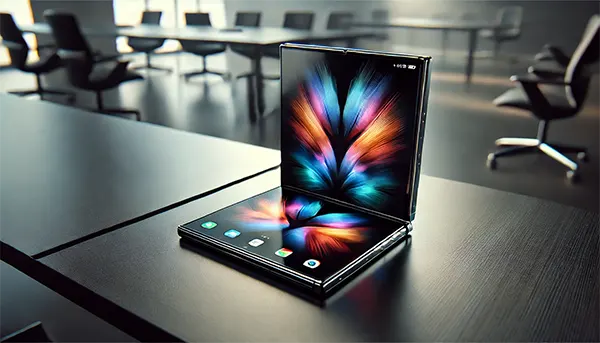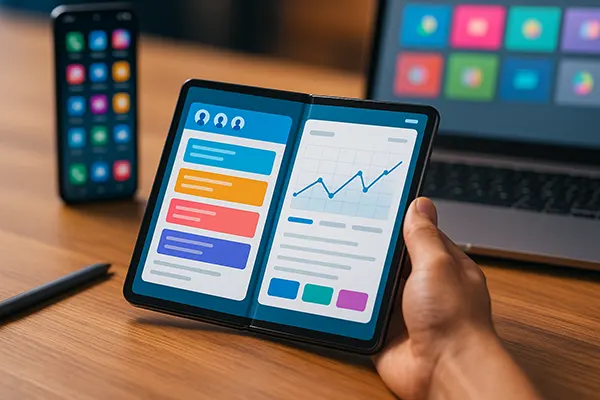Future of Foldable Smartphones in 2025: Should You Buy the Galaxy Z Fold 7, Pixel Fold 2, or Other New Releases?

Foldable smartphones have evolved significantly over the past few years, blending cutting-edge technology with enhanced durability and improved software support. As we step into 2025, leading tech giants such as Samsung, Google, and others are set to introduce the next generation of foldables. But are these devices worth investing in, or should consumers wait for further advancements?
The Evolution of Foldable Smartphones: What Has Changed?
Since their introduction, foldable smartphones have undergone tremendous improvements, addressing early concerns regarding durability, hinge mechanisms, and software optimization. The first generation of foldables was often criticized for fragile displays, high repair costs, and limited software adaptation.
Manufacturers have since refined their designs, integrating ultra-thin glass, reinforced hinge mechanisms, and enhanced multitasking capabilities. The industry has also witnessed the development of water-resistant foldables, making them more reliable in everyday use.
Battery life, once a major concern, has seen improvements with better energy efficiency and AI-driven power management. This allows foldable smartphones to sustain heavy usage without compromising performance.
Key Innovations in 2025 Foldable Models
The upcoming foldable smartphones in 2025 promise game-changing features. Samsung’s Galaxy Z Fold 7 is expected to incorporate a thinner, lighter design with improved S Pen support, while the Pixel Fold 2 is rumoured to feature an AI-enhanced camera system tailored for content creators.
Other brands, including Oppo and Xiaomi, are pushing the boundaries with more affordable foldables, offering high refresh rate displays and seamless user experiences. With reduced crease visibility and enhanced build materials, the latest foldables aim to challenge traditional flagship devices.
Software plays a crucial role in foldable adoption, with Android updates focusing on adaptive UI elements. This ensures that apps run smoothly across multiple screen modes, improving productivity and media consumption.

Should You Buy a Foldable Phone in 2025?
Foldable smartphones are no longer niche products; they have become mainstream contenders against traditional flagship devices. However, their high price points continue to be a barrier for many consumers. The decision to invest in a foldable depends on individual needs, lifestyle, and budget.
For productivity-focused users, foldables offer unparalleled multitasking capabilities, with split-screen functionality and stylus integration. Content creators and media enthusiasts benefit from expansive displays that enhance video editing, gaming, and content viewing.
On the other hand, those prioritizing battery longevity and compactness may still prefer standard flagship models, which often deliver better endurance due to non-foldable form factors.
Pros and Cons of Buying a Foldable Smartphone
Foldables provide a unique blend of portability and expanded screen real estate, making them ideal for power users who value versatility. The latest hinge designs also minimize wear and tear, extending device longevity.
However, drawbacks remain. Repair costs are significantly higher compared to standard smartphones, and not all applications are optimized for the foldable experience. Additionally, while battery improvements have been made, foldables still struggle to match the efficiency of conventional devices.
Pricing remains another challenge, with premium models exceeding $1,500. While mid-range foldables are emerging, they often sacrifice certain flagship features to maintain affordability.
What to Expect from Future Foldables
As technology advances, foldable smartphones are expected to become even more refined, addressing current limitations. Industry experts predict further enhancements in crease reduction, battery efficiency, and weight distribution.
Samsung and Google are already experimenting with rollable displays, which could replace foldables in the long run. This innovation aims to eliminate mechanical hinges altogether, offering seamless screen expansion without fold marks.
With increased competition in the foldable market, pricing is expected to become more competitive, making these devices accessible to a broader audience. As software developers continue optimizing apps for foldable screens, usability will improve, eliminating the last barriers to mainstream adoption.
Final Thoughts on Foldable Phones in 2025
Foldable smartphones have evolved from experimental gadgets to fully functional daily drivers. With Samsung, Google, and other manufacturers refining their designs, 2025’s models are set to offer significant improvements over their predecessors.
For early adopters and tech enthusiasts, the Galaxy Z Fold 7, Pixel Fold 2, and competing devices provide an exciting glimpse into the future of mobile technology. However, casual users may still find value in waiting for further refinements and price reductions.
Ultimately, the decision to buy a foldable phone depends on personal needs and financial considerations. If flexibility and innovation outweigh minor drawbacks, 2025 could be the perfect time to make the leap.




